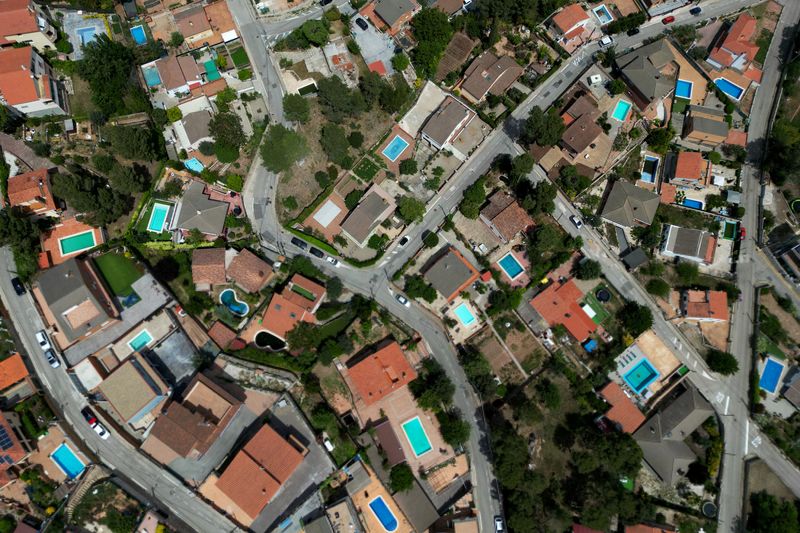MADRID (Reuters) - This year's spring was the hottest and second-driest in Spain since records began in 1961, with higher-than-average temperatures likely to continue this summer, the country's environment ministry and weather agency said on Wednesday.
Spain is still grappling with a prolonged drought that has decimated agricultural output, including in the key olive oil sector that accounts for nearly half of the world's production. The heat and dry weather bring additional dangers, with studies showing climate change has heightened the risk of wildfires.
Across continental Spain - excluding the Balearic and Canary archipelagos - temperatures between March 1 and June 1 averaged 14.2 degrees Celsius (57.6 Fahrenheit), the ministry said in a statement.
This was 1.8 degrees higher than the average for the reference period between 1991 and 2020 and 0.3 degrees hotter that the previous record registered in 1997.
The mercury in the southern province of Cordoba hit a new record high for April at 38.8C, the ministry said.
"We're getting used to breaking records," said Ruben del Campo, a spokesperson for national weather agency AEMET, adding that three out of the past four seasons - summer and autumn 2022 and spring 2023 - were the hottest on record.
This spring was also the second-driest on record, with almost no rainfall until mid-May, Del Campo said.
Although the longer-term drought outlook has eased slightly thanks to heavy rains in the second half of May, the problem was far from being solved, he added.
According to AEMET meteorologist Estrella Gutierrez, there was a "high probability" that Spain would once again experience a warmer-than-normal summer this year, especially in the eastern half of the country and on the islands.
AEMET's predictive models forecast a 50% to 70% chance that this summer will be one of the five hottest in the past three decades, she said, though there was also a 40% to 50% likelihood it would see higher-than-average rainfall.

Spain's reservoirs are on average at 47.4% of their capacity but levels have fallen to approximately 25% in southern Andalusia and northeastern Catalonia.
Data for 2022 showed it was the hottest year since records began in 1961, with three summer heatwaves that added up to 41 days, the most ever.